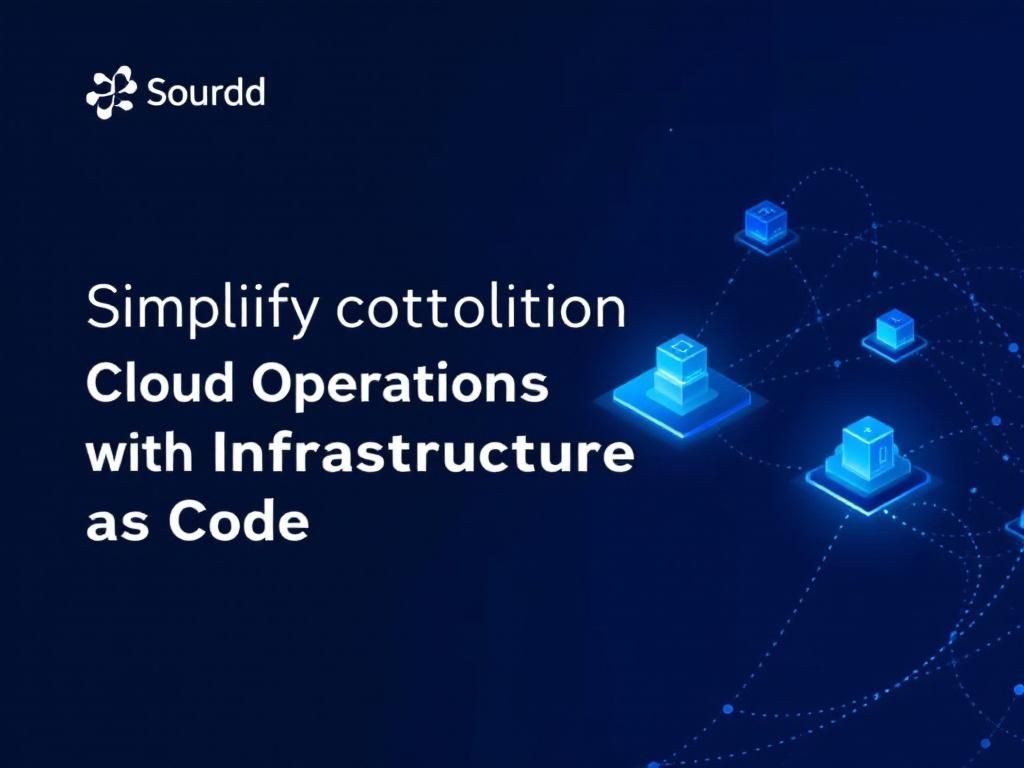Boost Cloud Operations with Infrastructure as Code
Discover how Infrastructure as Code can enhance your cloud operations, streamline processes, and improve scalability and reliability.

In the rapidly evolving world of cloud computing, businesses must adapt to maintain competitive advantage. One of the most effective strategies to streamline cloud operations is by leveraging Infrastructure as Code (IaC). This powerful methodology allows teams to manage and provision cloud resources using code instead of manual processes, leading to improved efficiency, consistency, and scalability. In this article, we will dive deep into the concepts and practices surrounding Infrastructure as Code, its benefits, and how to effectively implement it in your cloud operations.
Table of Contents
Understanding Infrastructure as Code
Infrastructure as Code is a modern approach to managing IT infrastructure through code rather than physical hardware configurations or manual setups. This technique is pivotal for organizations adopting DevOps practices and seeking automation in their workflows.
Key Concepts of IaC
- Declarative vs. Imperative: IaC can be implemented through declarative or imperative languages. Declarative languages focus on defining what the infrastructure should look like, while imperative languages describe how to achieve that state.
- Version Control: Just like application code, infrastructure definitions should be stored in version control systems. This allows teams to track changes, collaborate effectively, and revert to previous configurations if needed.
- Automation: The primary goal of IaC is to automate infrastructure provisioning and management, reducing the time and effort required to deploy and maintain system resources.
Benefits of Infrastructure as Code
Adopting IaC brings numerous advantages that can significantly enhance cloud operations, including:
1. Improved Consistency
Manual configurations often lead to discrepancies across environments. With IaC, infrastructure can be replicated consistently across development, staging, and production environments.
2. Accelerated Deployment
Automated infrastructure provisioning reduces deployment times from hours or days to mere minutes. This quick turnaround is vital for agile development practices.
3. Enhanced Collaboration
Storing infrastructure code in version control systems promotes collaboration between developers and operations teams, breaking down silos and fostering a culture of shared responsibility.
4. Better Resource Management
IaC enables organizations to optimize resource usage, as it provides clear visibility into infrastructure components and their configurations, facilitating better decision-making.
5. Disaster Recovery
In the event of a failure, IaC allows teams to quickly restore infrastructure to a known good state, minimizing downtime and data loss.
Popular Tools for Infrastructure as Code
Several tools have emerged to facilitate Infrastructure as Code practices. Here are some of the most widely used:
| Tool | Description | Use Case |
|---|---|---|
| Terraform | An open-source tool that enables users to define and provision infrastructure using a declarative configuration language. | Multi-cloud environments, resource management. |
| CloudFormation | A service provided by AWS that allows users to model and set up AWS resources using templates. | AWS-specific resource provisioning. |
| Azure Resource Manager (ARM) | A service for defining the infrastructure and configurations needed for Azure services. | Azure-specific deployments. |
| Ansible | A configuration management tool that automates software provisioning and application deployment. | Configuration management, application deployment. |
| Puppet | A tool for automating the delivery and operation of software across entire infrastructures. | Configuration management, compliance. |
| Chef | A configuration management tool that uses code to automate infrastructure management. | Automating complex deployment environments. |
Implementing Infrastructure as Code
To successfully implement IaC in your organization, consider the following steps:
1. Assess Your Current Infrastructure
Evaluate your existing infrastructure setups and identify areas where IaC could provide the most benefit. This may include cloud services that are currently managed manually or configurations that lack standardization.
2. Choose the Right Tools
Based on your cloud environment and preferred workflows, select the IaC tools that best meet your needs. Factors to consider include ease of use, community support, and integration capabilities.
3. Develop Infrastructure Code
Start writing your infrastructure as code scripts or templates. Follow best practices to ensure your code is clear, maintainable, and reusable:
- Use comments to explain complex configurations.
- Organize your code logically with modular components.
- Adhere to naming conventions for resources.
4. Version Control Your Infrastructure Code
Store your IaC scripts in a version control system like Git. This allows your team to track changes, manage branches, and collaborate efficiently.
5. Automate Testing and Deployment
Integrate automated testing frameworks to validate your infrastructure code before deployment. Continuous integration (CI) tools can help automate the deployment process, ensuring that infrastructure changes are rolled out reliably.
Challenges and Best Practices
While IaC offers significant advantages, challenges can arise during implementation. Here are some common obstacles and best practices to overcome them:
Common Challenges
- Complexity: As infrastructure grows, managing IaC can become complex. Adopt a modular approach to break down configurations into manageable units.
- State Management: Keeping track of the state of your infrastructure can be challenging. Use state files or remote state management solutions to avoid discrepancies.
- Security Concerns: Ensure that sensitive data, such as credentials, are handled securely. Use tools that support secret management.
Best Practices for IaC
- Implement a coding standard and review process for your infrastructure code.
- Regularly update your IaC scripts in line with changes in cloud provider features and best practices.
- Monitor your infrastructure for issues and optimize configurations as needed.
- Provide training and resources for your team to ensure they are well-versed in the IaC tools and practices.
Conclusion
Infrastructure as Code is a transformative approach that can significantly improve cloud operations, enabling organizations to achieve faster deployments, increased consistency, and enhanced collaboration. By understanding its principles, benefits, and best practices, organizations can effectively implement IaC and harness its full potential. As the cloud landscape continues to evolve, embracing Infrastructure as Code will be crucial for any tech-savvy organization looking to stay ahead of the curve.
FAQ
What is Infrastructure as Code (IaC)?
Infrastructure as Code (IaC) is a modern approach to managing and provisioning computing infrastructure through machine-readable definition files, rather than physical hardware configuration or interactive configuration tools.
How does IaC improve cloud operations?
IaC improves cloud operations by automating the provisioning and management of infrastructure, reducing manual errors, increasing consistency, and allowing for rapid deployment and scaling of resources.
What are the benefits of using IaC in cloud environments?
The benefits of using IaC in cloud environments include enhanced collaboration, improved security through version control, easier rollback to previous configurations, and significant cost savings through optimized resource usage.
Which tools are commonly used for Infrastructure as Code?
Common tools for Infrastructure as Code include Terraform, AWS CloudFormation, Ansible, and Puppet, each offering unique features to automate cloud infrastructure management.
Can IaC be integrated with DevOps practices?
Yes, IaC is a fundamental component of DevOps practices as it facilitates continuous integration and continuous deployment (CI/CD) by automating the infrastructure setup needed for software development and deployment.
Is Infrastructure as Code secure?
While IaC can increase security through consistent configurations and version control, it is essential to implement best practices such as regular audits, access controls, and secret management to ensure a secure infrastructure.








